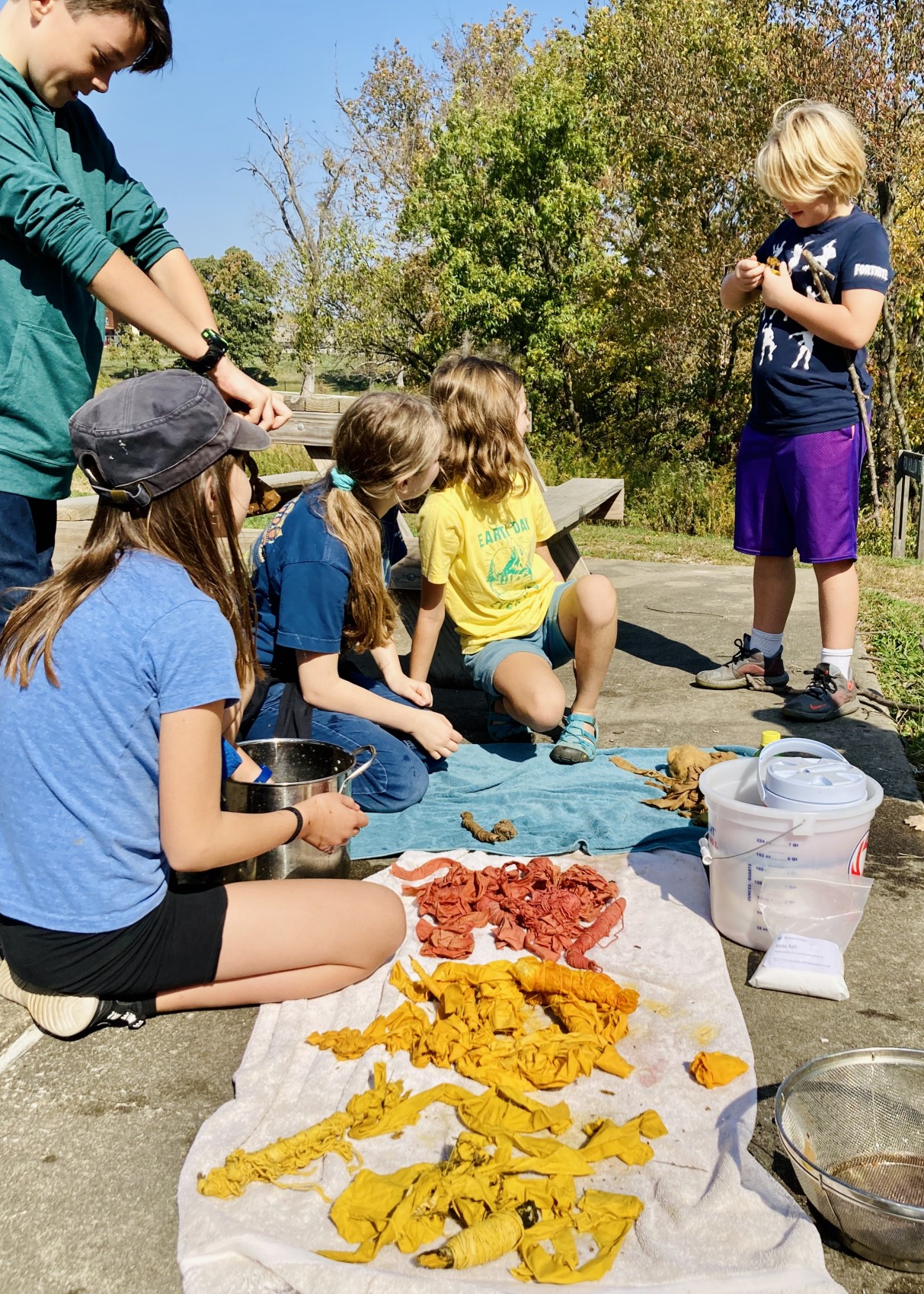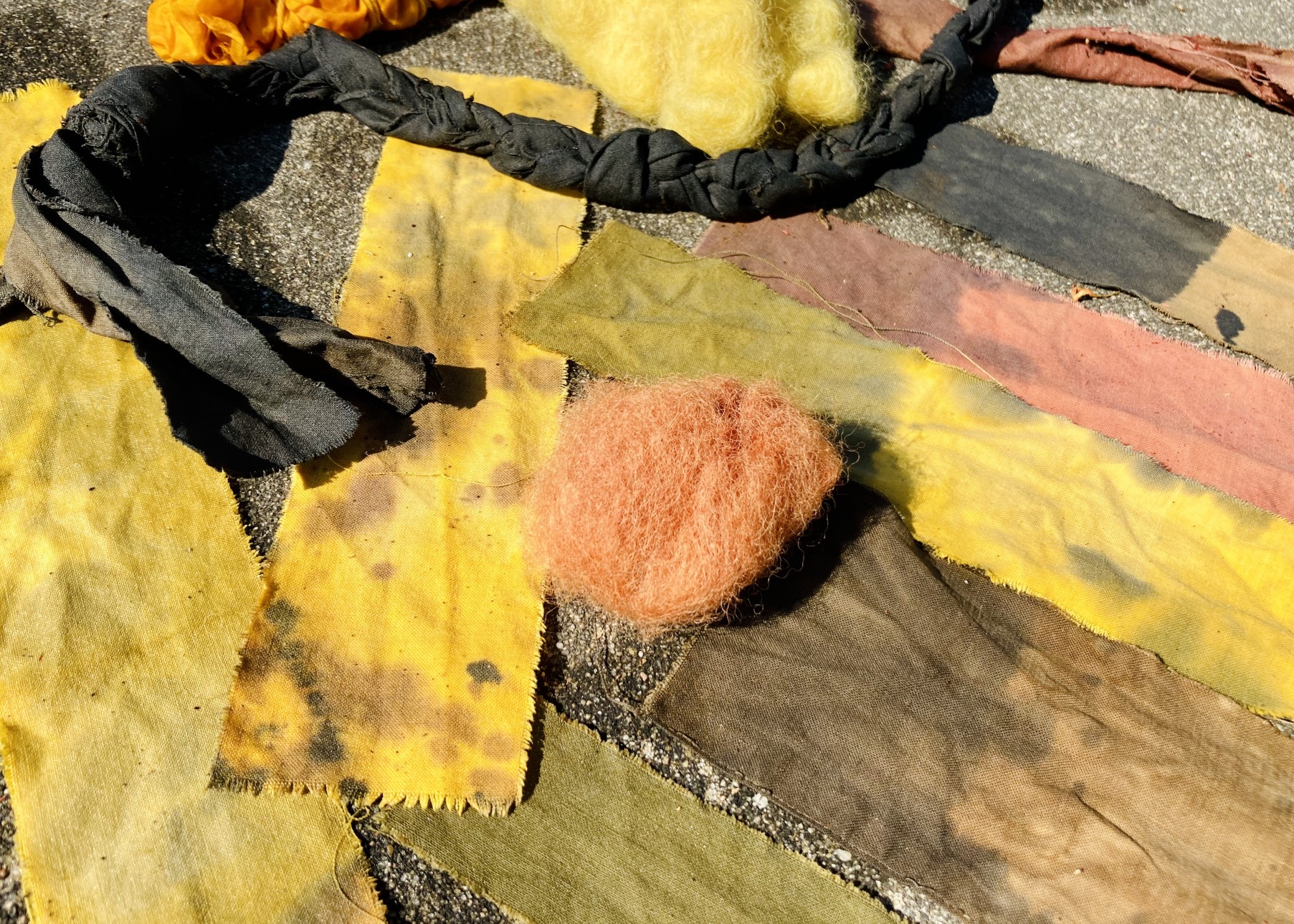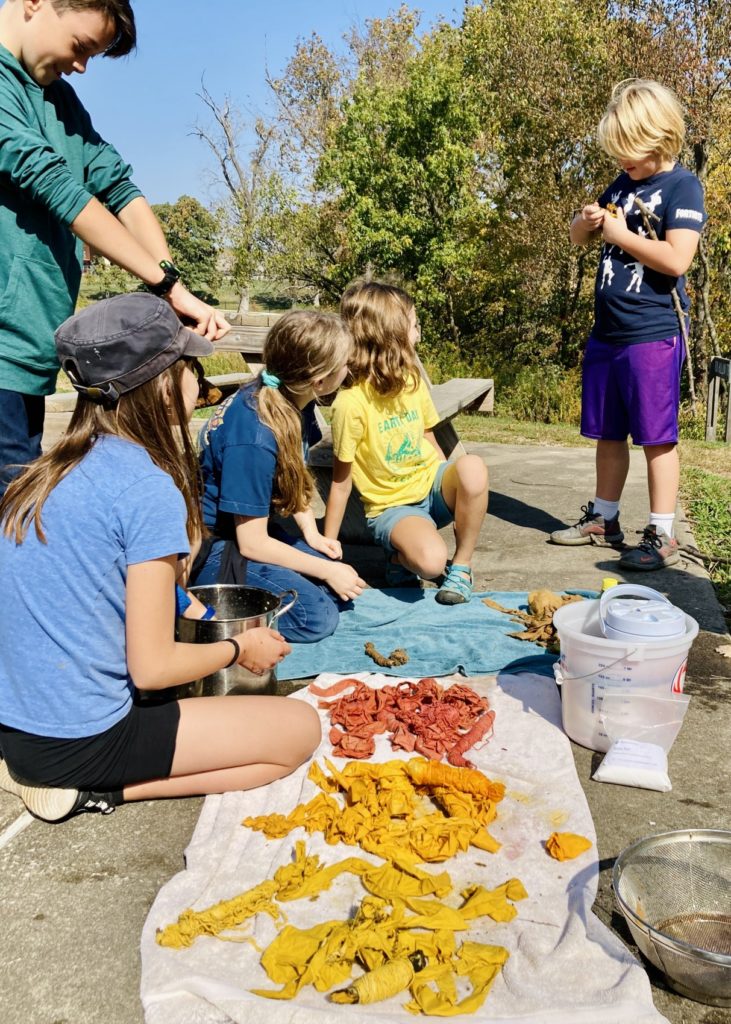October 18, 2020
I found I could say things with colors and shapes that I couldn’t say any other way. Things I had no words for. – Georgia O’Keefe

The kids were really eager to see our results from last week’s solar dyeing project. One of them asked immediately upon arrival, “What do the dyes look like!?” He has been my most avid collector of seeds, bringing me small bags of walnuts from his backyard each week and collecting acorns during our class gatherings. It’s extraordinary how the extraction of color from botanical materials works. I have never studied the exact science of it, preferring for now to maintain its mystery while allowing my imagination and my experience to begin developing the answer. This great art-meets-science project definitely initiated a curiosity and interest in color extraction for some of them, too.

Though all of our dyestuffs will supposedly dye in a cool bath, I wasn’t sure how well they would take to the fibers with the fluctuating temperatures of autumn. I chose to apply consistent low temperature heat on the stove to the acorn, goldenrod and madder root after previewing our results. In order for the children to see the difference, I set aside some of the fibers of each color before heating. Heat was definitely important for the goldenrod. It’s color uptake was vastly different. The acorn and madder were also richer but there was not as much of a difference.
Once we started the main lesson part of our day, we emptied the liquid dyes through a colander into the grass and pulled out the fibers for a quick rinse and a rest on towels in the sun. We briefly talked about our results and I taught them about ways that we can modify our colors with acidic, alkaline, copper and iron baths. Then each child took a sample of the five colors and took turns dipping them into the different baths to see what would happen. The most rewarding was the iron bath, which has the most dramatic results of creating purples, greys and blacks. They were quite enthralled by this experiment and our results were beautiful. The madder root made a gorgeous dark mauve-like purple.

In a world that is so quick to give answers and fill a child’s mind with facts, I really appreciate processes such as this one. I did give them some basic information about natural dyeing that created context for our experiment, but I largely focused on the process and its wonder-inspiring results. With a solar dye in which it takes days to extract color, they also get the chance to practice some patience! I think it’s important to maintain the magic of experiences like this one, even for older children. They have so much explained to them, there is little remaining to keep wondering about, to keep exercising their muscles of curiosity. If they are still interested in dyeing and color extraction some years from now, they’ll dive into the explanations and facts independently. For them now, it’s just a marvel to see.
